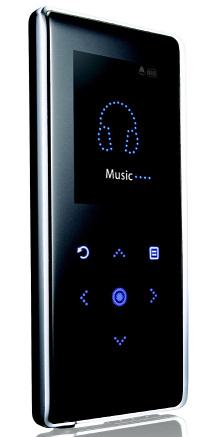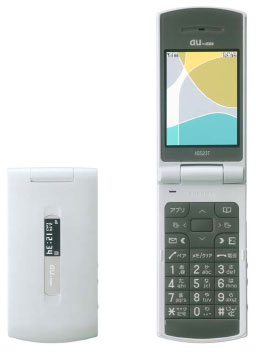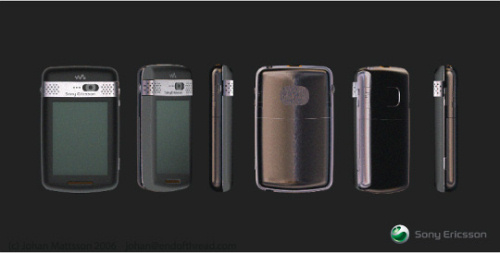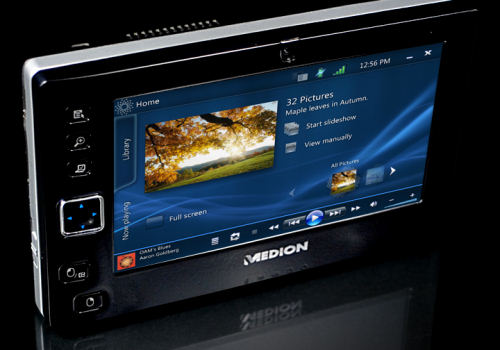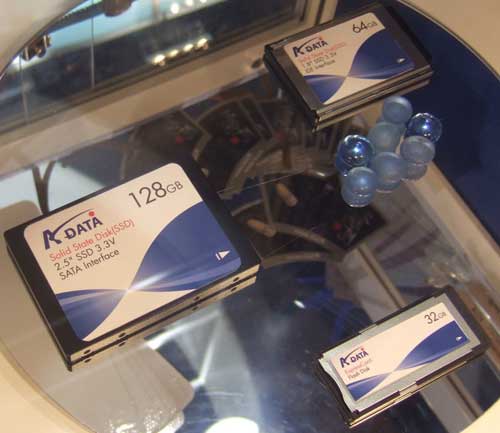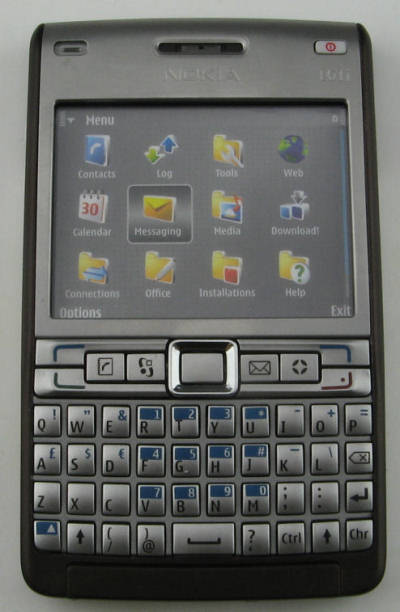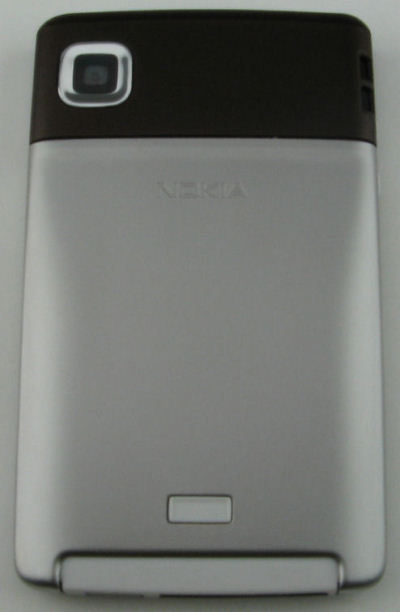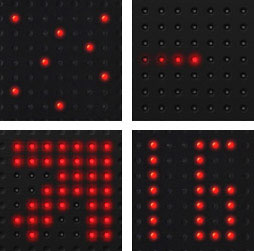Mesothelioma is a form of cancer that is almost always caused by previous exposure to asbestos. In this disease, malignant cells develop in the mesothelium, a protective lining that covers most of the body's internal organs. Its most common site is the pleura (outer lining of the lungs and internal chest wall), but it may also occur in the peritoneum (the lining of the abdominal cavity), the heart,[1] the pericardium (a sac that surrounds the heart) or tunica vaginalis.
Most people who develop mesothelioma have worked on jobs where they inhaled asbestos particles, or they have been exposed to asbestos dust and fiber in other ways. Washing the clothes of a family member who worked with asbestos can also put a person at risk for developing mesothelioma.[2] Unlike lung cancer, there is no association between mesothelioma and smoking.[3] Compensation via asbestos funds or lawsuits is an important issue in mesothelioma (see asbestos and the law).
The symptoms of mesothelioma include shortness of breath due to pleural effusion (fluid between the lung and the chest wall) or chest wall pain, and general symptoms such as weight loss. The diagnosis may be suspected with chest X-ray and CT scan, and is confirmed with a biopsy (tissue sample) and microscopic examination. A thoracoscopy (inserting a tube with a camera into the chest) can be used to take biopsies. It allows the introduction of substances such as talc to obliterate the pleural space (called pleurodesis), which prevents more fluid from accumulating and pressing on the lung. Despite treatment with chemotherapy, radiation therapy or sometimes surgery, the disease carries a poor prognosis. Research about screening tests for the early detection of mesothelioma is ongoing.
[edit] Signs and symptoms
Symptoms of mesothelioma may not appear until 20 to 50 years after exposure to asbestos. Shortness of breath, cough, and pain in the chest due to an accumulation of fluid in the pleural space are often symptoms of pleural mesothelioma.
Symptoms of peritoneal mesothelioma include weight loss and cachexia, abdominal swelling and pain due to ascites (a buildup of fluid in the abdominal cavity). Other symptoms of peritoneal mesothelioma may include bowel obstruction, blood clotting abnormalities, anemia, and fever. If the cancer has spread beyond the mesothelium to other parts of the body, symptoms may include pain, trouble swallowing, or swelling of the neck or face.
These symptoms may be caused by mesothelioma or by other, less serious conditions.
Mesothelioma that affects the pleura can cause these signs and symptoms:
- chest wall pain
- pleural effusion, or fluid surrounding the lung
- shortness of breath
- fatigue or anemia
- wheezing, hoarseness, or cough
- blood in the sputum (fluid) coughed up (hemoptysis)
In severe cases, the person may have many tumor masses. The individual may develop a pneumothorax, or collapse of the lung. The disease may metastasize, or spread, to other parts of the body.
Tumors that affect the abdominal cavity often do not cause symptoms until they are at a late stage. Symptoms include:
- abdominal pain
- ascites, or an abnormal buildup of fluid in the abdomen
- a mass in the abdomen
- problems with bowel function
- weight loss
In severe cases of the disease, the following signs and symptoms may be present:
A mesothelioma does not usually spread to the bone, brain, or adrenal glands. Pleural tumors are usually found only on one side of the lungs.
[edit] Diagnosis
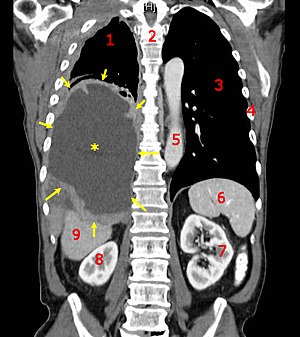
CT scan of a patient with mesothelioma,
coronal section (the section follows the plane the divides the body in a front and a back half). The mesothelioma is indicated by yellow arrows, the central
pleural effusion (fluid collection) is marked with a yellow star. Red numbers: (1) right lung, (2) spine, (3) left lung, (4) ribs, (5)
descending part of the
aorta, (6)
spleen, (7) left
kidney, (8) right kidney, (9)
liver.
Diagnosing mesothelioma is often difficult, because the symptoms are similar to those of a number of other conditions. Diagnosis begins with a review of the patient's medical history. A history of exposure to asbestos may increase clinical suspicion for mesothelioma. A physical examination is performed, followed by chest X-ray and often lung function tests. The X-ray may reveal pleural thickening commonly seen after asbestos exposure and increases suspicion of mesothelioma. A CT (or CAT) scan or an MRI is usually performed. If a large amount of fluid is present, abnormal cells may be detected by cytology if this fluid is aspirated with a syringe. For pleural fluid this is done by a pleural tap or chest drain, in ascites with an paracentesis or ascitic drain and in a pericardial effusion with pericardiocentesis. While absence of malignant cells on cytology does not completely exclude mesothelioma, it makes it much more unlikely, especially if an alternative diagnosis can be made (e.g. tuberculosis, heart failure).
If cytology is positive or a plaque is regarded as suspicious, a biopsy is needed to confirm a diagnosis of mesothelioma. A doctor removes a sample of tissue for examination under a microscope by a pathologist. A biopsy may be done in different ways, depending on where the abnormal area is located. If the cancer is in the chest, the doctor may perform a thoracoscopy. In this procedure, the doctor makes a small cut through the chest wall and puts a thin, lighted tube called a thoracoscope into the chest between two ribs. Thoracoscopy allows the doctor to look inside the chest and obtain tissue samples.
If the cancer is in the abdomen, the doctor may perform a laparoscopy. To obtain tissue for examination, the doctor makes a small incision in the abdomen and inserts a special instrument into the abdominal cavity. If these procedures do not yield enough tissue, more extensive diagnostic surgery may be necessary.
[edit] Screening
There is no universally agreed protocol for screening people who have been exposed to asbestos. Screening tests might diagnose mesothelioma earlier than conventional methods thus improving the survival prospects for patients. The serum osteopontin level might be useful in screening asbestos-exposed people for mesothelioma. The level of soluble mesothelin-related protein is elevated in the serum of about 75% of patients at diagnosis and it has been suggested that it may be useful for screening.[4] Doctors have begun testing the Mesomark assay which measures levels of soluble mesothelin-related proteins (SMRPs) released by diseased mesothelioma cells.[5]
[edit] Staging
Mesothelioma is described as localized if the cancer is found only on the membrane surface where it originated. It is classified as advanced if it has spread beyond the original membrane surface to other parts of the body, such as the lymph nodes, lungs, chest wall, or abdominal organs.
[edit] Pathophysiology
The mesothelium consists of a single layer of flattened to cuboidal cells forming the epithelial lining of the serous cavities of the body including the peritoneal, pericardial and pleural cavities. Deposition of asbestos fibres in the parenchyma of the lung may result in the penetration of the visceral pleura from where the fibre can then be carried to the pleural surface, thus leading to the development of malignant mesothelial plaques. The processes leading to the development of peritoneal mesothelioma remain unresolved, although it has been proposed that asbestos fibres from the lung are transported to the abdomen and associated organs via the lymphatic system. Additionally, asbestos fibres may be deposited in the gut after ingestion of sputum contaminated with asbestos fibres.
Pleural contamination with asbestos or other mineral fibres has been shown to cause cancer. Long thin asbestos fibers (blue asbestos, amphibole fibers) are more potent carcinogens than "feathery fibers" (chrysotile or white asbestos fibers).[6] However, there is now evidence that smaller particles may be more dangerous than the larger fibers.[1][2] They remain suspended in the air where they can be inhaled, and may penetrate more easily and deeper into the lungs. "We probably will find out a lot more about the health aspects of asbestos from [the World Trade Center attack], unfortunately," said Dr. Alan Fein, chief of pulmonary and critical-care medicine at North Shore-Long Island Jewish Health System. Dr. Fein has treated several patients for "World Trade Center syndrome" or respiratory ailments from brief exposures of only a day or two near the collapsed buildings.[3]
Mesothelioma development in rats has been demonstrated following intra-pleural inoculation of phosphorylated chrysotile fibres. It has been suggested that in humans, transport of fibres to the pleura is critical to the pathogenesis of mesothelioma. This is supported by the observed recruitment of significant numbers of macrophages and other cells of the immune system to localised lesions of accumulated asbestos fibres in the pleural and peritoneal cavities of rats. These lesions continued to attract and accumulate macrophages as the disease progressed, and cellular changes within the lesion culminated in a morphologically malignant tumour.
Experimental evidence suggests that asbestos acts as a complete carcinogen with the development of mesothelioma occurring in sequential stages of initiation and promotion. The molecular mechanisms underlying the malignant transformation of normal mesothelial cells by asbestos fibres remain unclear despite the demonstration of its oncogenic capabilities. However, complete in vitro transformation of normal human mesothelial cells to malignant phenotype following exposure to asbestos fibres has not yet been achieved. In general, asbestos fibres are thought to act through direct physical interactions with the cells of the mesothelium in conjunction with indirect effects following interaction with inflammatory cells such as macrophages.
Analysis of the interactions between asbestos fibres and DNA has shown that phagocytosed fibres are able to make contact with chromosomes, often adhering to the chromatin fibres or becoming entangled within the chromosome. This contact between the asbestos fibre and the chromosomes or structural proteins of the spindle apparatus can induce complex abnormalities. The most common abnormality is monosomy of chromosome 22. Other frequent abnormalities include structural rearrangement of 1p, 3p, 9p and 6q chromosome arms.
Common gene abnormalities in mesothelioma cell lines include deletion of the tumor suppressor genes:
Asbestos has also been shown to mediate the entry of foreign DNA into target cells. Incorporation of this foreign DNA may lead to mutations and oncogenesis by several possible mechanisms:
- Inactivation of tumor suppressor genes
- Activation of oncogenes
- Activation of proto-oncogenes due to incorporation of foreign DNA containing a promoter region
- Activation of DNA repair enzymes, which may be prone to error
- Activation of telomerase
- Prevention of apoptosis
Asbestos fibers have been shown to alter the function and secretory properties of macrophages, ultimately creating conditions which favour the development of mesothelioma. Following asbestos phagocytosis, macrophages generate increased amounts of hydroxyl radicals, which are normal by-products of cellular anaerobic metabolism. However, these free radicals are also known clastogenic and membrane-active agents thought to promote asbestos carcinogenicity. These oxidants can participate in the oncogenic process by directly and indirectly interacting with DNA, modifying membrane-associated cellular events, including oncogene activation and perturbation of cellular antioxidant defences.
Asbestos also may possess immunosuppressive properties. For example, chrysotile fibres have been shown to depress the in vitro proliferation of phytohemagglutinin-stimulated peripheral blood lymphocytes, suppress natural killer cell lysis and significantly reduce lymphokine-activated killer cell viability and recovery. Furthermore, genetic alterations in asbestos-activated macrophages may result in the release of potent mesothelial cell mitogens such as platelet-derived growth factor (PDGF) and transforming growth factor-β (TGF-β) which in turn, may induce the chronic stimulation and proliferation of mesothelial cells after injury by asbestos fibres.
[edit] Epidemiology
[edit] Incidence
Although reported incidence rates have increased in the past 20 years, mesothelioma is still a relatively rare cancer. The incidence rate is approximately one per 1,000,000. The highest incidence is found in Britain, Australia and Belgium: 30 per 1,000,000 per year.[7] For comparison, populations with high levels of smoking can have a lung cancer incidence of over 1,000 per 1,000,000. Incidence of malignant mesothelioma currently ranges from about 7 to 40 per 1,000,000 in industrialized Western nations, depending on the amount of asbestos exposure of the populations during the past several decades.[8] It has been estimated that incidence may have peaked at 15 per 1,000,000 in the United States in 2004. Incidence is expected to continue increasing in other parts of the world. Mesothelioma occurs more often in men than in women and risk increases with age, but this disease can appear in either men or women at any age. Approximately one fifth to one third of all mesotheliomas are peritoneal.
Between 1940 and 1979, approximately 27.5 million people were occupationally exposed to asbestos in the United States [4]. Between 1973 and 1984, there has been a threefold increase in the diagnosis of pleural mesothelioma in Caucasian males. From 1980 to the late 1990s, the death rate from mesothelioma in the USA increased from 2,000 per year to 3,000, with men four times more likely to acquire it than women. These rates may not be accurate, since it is possible that many cases of mesothelioma are misdiagnosed as adenocarcinoma of the lung, which is difficult to differentiate from mesothelioma.
[edit] Risk factors
Working with asbestos is the major risk factor for mesothelioma.[9] Mesothelioma is now known to occur in those who are genetically pre-disposed to it. A history of asbestos exposure exists in almost all cases. However, mesothelioma has been reported in some individuals without any known exposure to asbestos. In rare cases, mesothelioma has also been associated with irradiation, intrapleural thorium dioxide (Thorotrast), and inhalation of other fibrous silicates, such as erionite.
Asbestos is the name of a group of minerals that occur naturally as masses of strong, flexible fibers that can be separated into thin threads and woven. Asbestos has been widely used in many industrial products, including cement, brake linings, roof shingles, flooring products, textiles, and insulation. If tiny asbestos particles float in the air, especially during the manufacturing process, they may be inhaled or swallowed, and can cause serious health problems. In addition to mesothelioma, exposure to asbestos increases the risk of lung cancer, asbestosis (a noncancerous, chronic lung ailment), and other cancers, such as those of the larynx and kidney.
The combination of smoking and asbestos exposure significantly increases a person's risk of developing cancer of the airways (lung cancer, bronchial carcinoma). The Kent brand of cigarettes used asbestos in its filters for the first few years of production in the 1950s and some cases of mesothelioma have resulted. Smoking modern cigarettes does not appear to increase the risk of mesothelioma.
Some studies suggest that simian virus 40 (SV40) may act as a cofactor in the development of mesothelioma.[10]
[edit] Exposure
Asbestos was known in antiquity, but it wasn't mined and widely used commercially until the late 1800s. Its use greatly increased during World War II. Since the early 1940s, millions of American workers have been exposed to asbestos dust. Initially, the risks associated with asbestos exposure were not publicly known. However, an increased risk of developing mesothelioma was later found among shipyard workers, people who work in asbestos mines and mills, producers of asbestos products, workers in the heating and construction industries, and other tradespeople. Today, the U.S. Occupational Safety and Health Administration (OSHA) sets limits for acceptable levels of asbestos exposure in the workplace, and created guidelines for engineering controls and respirators, protective clothing, exposure monitoring, hygiene facilities and practices, warning signs, labeling, recordkeeping, and medical exams. By contrast, the British Government's Health and Safety Executive (HSE) states formally that any threshold for mesothelioma must be at a very low level and it is widely agreed that if any such threshold does exist at all, then it cannot currently be quantified. For practical purposes, therefore, HSE does not assume that any such threshold exists. People who work with asbestos wear personal protective equipment to lower their risk of exposure. Recent findings have shown that a mineral called erionite has been known to cause genetically pre-dispositioned individuals to have malignant mesothelioma rates much higher than those not pre-dispositioned genetically. A study in Cappadocia, Turkey has shown that 3 villiages in Turkey have death rates of 51% attributed to erionite related mesothelioma.
[edit] Occupational
Exposure to asbestos fibres has been recognised as an occupational health hazard since the early 1900s. Several epidemiological studies have associated exposure to asbestos with the development of lesions such as asbestos bodies in the sputum, pleural plaques, diffuse pleural thickening, asbestosis, carcinoma of the lung and larynx, gastrointestinal tumours, and diffuse mesothelioma of the pleura and peritoneum.
The documented presence of asbestos fibres in water supplies and food products has fostered concerns about the possible impact of long-term and, as yet, unknown exposure of the general population to these fibres. Although many authorities consider brief or transient exposure to asbestos fibres as inconsequential and an unlikely risk factor, some epidemiologists claim that there is no risk threshold. Cases of mesothelioma have been found in people whose only exposure was breathing the air through ventilation systems. Other cases had very minimal (3 months or less) direct exposure.
Commercial asbestos mining at Wittenoom, Western Australia, occurred between 1945 and 1966. A cohort study of miners employed at the mine reported that while no deaths occurred within the first 10 years after crocidolite exposure, 85 deaths attributable to mesothelioma had occurred by 1985. By 1994, 539 reported deaths due to mesothelioma had been reported in Western Australia.
[edit] Paraoccupational secondary exposure
Family members and others living with asbestos workers have an increased risk of developing mesothelioma, and possibly other asbestos related diseases. This risk may be the result of exposure to asbestos dust brought home on the clothing and hair of asbestos workers. To reduce the chance of exposing family members to asbestos fibres, asbestos workers are usually required to shower and change their clothing before leaving the workplace.
[edit] Asbestos in buildings
Many building materials used in both public and domestic premises prior to the banning of asbestos may contain asbestos. Those performing renovation works or DIY activities may expose themselves to asbestos dust. In the UK use of Chrysotile asbestos was banned at the end of 1999. Brown and blue asbestos was banned in the UK around 1985. Buildings built or renovated prior to these dates may contain asbestos materials.
[edit] Environmental exposures
Incidence of mesothelioma had been found to be higher in populations living near naturally occurring asbestos. For example, in Cappadocia, Turkey, an unprecedented mesothelioma epidemic caused 50% of all deaths in three small villages. Initially, this was attributed to erionite, however, recently, it has been shown that erionite causes mesothelioma mostly in families with a genetic predisposition[11].
[edit] Treatment
Treatment of malignant mesothelioma using conventional therapies has not proved successful and patients have a median survival time of 6 - 12 months after presentation[citation needed]. The clinical behaviour of the malignancy is affected by several factors including the continuous mesothelial surface of the pleural cavity which favours local metastasis via exfoliated cells, invasion to underlying tissue and other organs within the pleural cavity, and the extremely long latency period between asbestos exposure and development of the disease.
[edit] Surgery
Surgery, either by itself or used in combination with pre- and post-operative adjuvant therapies, has proved disappointing. A pleurectomy/decortication is the most common surgery, in which the lining of the chest is removed. Less common is an extrapleural pneumonectomy (EPP), in which the lung, lining of the inside of the chest, the hemi-diaphragm and the pericardium are removed.
[edit] Radiation
For patients with localized disease, and who can tolerate a radical surgery, radiation is often given post-operatively as a consolidative treatment. The entire hemi-thorax is treated with radiation therapy, often given simultaneously with chemotherapy. This approach of using surgery followed by radiation with chemotherapy has been pioneered by the thoracic oncology team at Brigham & Women's Hospital in Boston.[12] Delivering radiation and chemotherapy after a radical surgery has led to extended life expectancy in selected patient populations with some patients surviving more than 5 years. As part of a curative approach to mesothelioma, radiotherapy is also commonly applied to the sites of chest drain insertion, in order to prevent growth of the tumor along the track in the chest wall.
Although mesothelioma is generally resistant to curative treatment with radiotherapy alone, palliative treatment regimens are sometimes used to relieve symptoms arising from tumor growth, such as obstruction of a major blood vessel. Radiation therapy when given alone with curative intent has never been shown to improve survival from mesothelioma. The necessary radiation dose to treat mesothelioma that has not been surgically removed would be very toxic.
[edit] Chemotherapy
In February 2004, the United States Food and Drug Administration approved pemetrexed (brand name Alimta) for treatment of malignant pleural mesothelioma. Pemetrexed is given in combination with cisplatin. Folic acid is also used to reduce the side-effects of pemetrexed.
[edit] Immunotherapy
Treatment regimens involving immunotherapy have yielded variable results. For example, intrapleural inoculation of Bacillus Calmette-Guérin (BCG) in an attempt to boost the immune response, was found to be of no benefit to the patient (while it may benefit patients with bladder cancer). Mesothelioma cells proved susceptible to in vitro lysis by LAK cells following activation by interleukin-2 (IL-2), but patients undergoing this particular therapy experienced major side effects. Indeed, this trial was suspended in view of the unacceptably high levels of IL-2 toxicity and the severity of side effects such as fever and cachexia. Nonetheless, other trials involving interferon alpha have proved more encouraging with 20% of patients experiencing a greater than 50% reduction in tumor mass combined with minimal side effects.
[edit] Heated Intraoperative Intraperitoneal Chemotherapy
A procedure known as heated intraoperative intraperitoneal chemotherapy was developed by Paul Sugarbaker at the Washington Cancer Institute.[13] The surgeon removes as much of the tumor as possible followed by the direct administration of a chemotherapy agent, heated to between 40 and 48°C, in the abdomen. The fluid is perfused for 60 to 120 minutes and then drained.
This technique permits the administration of high concentrations of selected drugs into the abdominal and pelvic surfaces. Heating the chemotherapy treatment increases the penetration of the drugs into tissues. Also, heating itself damages the malignant cells more than the normal cells.
[edit] Notable people who died from mesothelioma
Mesothelioma, though rare, has had a number of notable patients. Hamilton Jordan, Chief of Staff for President Jimmy Carter and life long cancer activist, died in 2008. Australian anti-racism activist Bob Bellear died in 2005. British science fiction writer Michael G. Coney, responsible for nearly 100 works also died in 2005. American film and television actor Paul Gleason, perhaps best known for his portrayal of Principal Richard Vernon in the 1985 film The Breakfast Club, died in 2006. Mickie Most, an English record producer, died of mesothelioma in 2003. Paul Rudolph, an American architect known for his cubist building designs, died in 1997.
Bernie Banton was an Australian workers' rights activist, who fought a long battle for compensation from James Hardie after he contracted mesothelioma after working for that company. He claimed James Hardie knew of the dangers of asbestos before he began work with the substance making insulation for power stations. Mesothelioma eventually took his life along with his brothers and hundreds of James Hardie workers. James Hardie made an undisclosed settlement with Banton only when his mesothelioma had reached its final stages and he was expected to have no more than 48hrs to live. Australian Prime Minister-elect Kevin Rudd mentioned Banton's extended struggle in his acceptance speech after winning the 2007 Australian Federal Election.
Steve McQueen was diagnosed with peritoneal mesothelioma on December 22, 1979. He was not offered surgery or chemotherapy because doctors felt the cancer was too advanced. McQueen sought alternative treatments from clinics in Mexico. He died of a heart attack on November 7, 1980, in Juárez, Mexico, following cancer surgery. He may have been exposed to asbestos while serving with the U.S. Marines as a young adult—asbestos was then commonly used to insulate ships' piping—or from its use as an insulating material in car racing suits.[14] (It is also reported that he worked in a shipyard during World War II, where he might have been exposed to asbestos.[citation needed]
United States Congressman Bruce Vento died of mesothelioma in 2000. The Bruce Vento Hopebuilder is awarded yearly by his wife at the MARF Symposium to persons or organizations who have done the most to support mesothelioma research and advocacy.
After a long period of untreated illness and pain, rock and roll musician and songwriter Warren Zevon was diagnosed with inoperable mesothelioma in the fall of 2002. Refusing treatments he believed might incapacitate him, Zevon focused his energies on recording his final album The Wind including the song "Keep Me in Your Heart," which speaks of his failing breath. Zevon died at his home in Los Angeles, California, on September 7, 2003.
Christie Hennessy, the influential Irish singer-songwriter, died of mesothelioma in 2007, and had stridently refused to accept the prognosis in the weeks before his death.[15] His mesothelioma has been attributed to his younger years spent working on building sites in London.[16][17]
Bob Miner, one of the founders of Software Development Labs, the forerunner of Oracle Corporation died of mesothelioma in 1994.
Scottish Labour MP John William MacDougall died of mesothelioma on August 13th, 2008, after fighting the disease of two years.[18].
Canberra journalist and news presenter, Peter Leonard also succumbed to the condition on 23 September 2008.
Terrence McCann Olympic gold medalist and longtime Executive Director of Toastmasters, died of mesothelioma on June 7, 2006 at his home in Dana Point, California.
[edit] Notable people who have lived for some time with mesothelioma
Although life expectancy with this disease is typically limited, there are notable survivors. In July 1982, Stephen Jay Gould was diagnosed with peritoneal mesothelioma. After his diagnosis, Gould wrote the "The Median Isn't the Message"[19] for Discover magazine, in which he argued that statistics such as median survival are just useful abstractions, not destiny. Gould lived for another twenty years eventually succumbing to metastatic adenocarcinoma of the lung, not mesothelioma.
Author Paul Kraus was diagnosed with mesothelioma in June 1997 following an umbilical hernia operation. His prognosis was "a few months." He continues to survive using a variety of integrative and complementary modalities and has written a book about his experience.
[edit] Legal issues
-
The first lawsuits against asbestos manufacturers were in 1929. Since then, many lawsuits have been filed against asbestos manufacturers and employers, for neglecting to implement safety measures after the links between asbestos, asbestosis, and mesothelioma became known (some reports seem to place this as early as 1898). Today, you may see a commercial stating something like, "Mesothelioma is a rare type of cancer caused by asbestos particles. Asbestos particles can be found in lumberyards, shipyards or any of the heating or automotive industries." The liability resulting from the sheer number of lawsuits and people affected has reached billions of dollars. [20] The amounts and method of allocating compensation have been the source of many court cases, reaching up to the United States Supreme Court, and government attempts at resolution of existing and future cases. However, to date, Congress has failed to enact significant asbestos reforms. [21]
[edit] Legal History
The first lawsuit against asbestos manufacturers was brought in 1929. The parties settled that lawsuit, and as part of the agreement, the attorneys agreed not to pursue further cases. It was not until 1960 that an article published by Wagner et al first officially established mesothelioma as a disease arising from exposure to crocidolite asbestos.[22] The article referred to over 30 case studies of people who had suffered from mesothelioma in South Africa. Some exposures were transient and some were mine workers. In 1962 McNulty reported the first diagnosed case of malignant mesothelioma in an Australian asbestos worker.[23] The worker had worked in the mill at the asbestos mine in Wittenoom from 1948 to 1950.
In the town of Wittenoom, asbestos-containing mine waste was used to cover schoolyards and playgrounds. In 1965 an article in the British Journal of Industrial Medicine established that people who lived in the neighbourhoods of asbestos factories and mines, but did not work in them, had contracted mesothelioma.
Despite proof that the dust associated with asbestos mining and milling causes asbestos related disease, mining began at Wittenoom in 1943 and continued until 1966. In 1974 the first public warnings of the dangers of blue asbestos were published in a cover story called "Is this Killer in Your Home?" in Australia's Bulletin magazine. In 1978 the Western Australian Government decided to phase out the town of Wittenoom, following the publication of a Health Dept. booklet, "The Health Hazard at Wittenoom", containing the results of air sampling and an appraisal of worldwide medical information.
By 1979 the first writs for negligence related to Wittenoom were issued against CSR and its subsidiary ABA, and the Asbestos Diseases Society was formed to represent the Wittenoom victims.
[edit] References
The first version of this article was adapted from a public domain U.S. National Cancer Institute fact sheet at http://www.cancer.gov/cancertopics/factsheet/Sites-Types/mesothelioma
[edit] Footnotes
- ^ Ashrafian H, Athanasiou T, Yap J, DeSouza AC. Two-chamber intracardiac mesothelioma. Asian Cardiovasc Thorac Ann. 2005 Jun;13(2):184-6.
- ^ Eastbourne Today. "Woman's death from asbestos". Retrieved on 2008-10-28.
- ^ Muscat JE, Wynder EL (May 1991). "Cigarette smoking, asbestos exposure, and malignant mesothelioma". Cancer Res. 51 (9): 2263–7. PMID 2015590, http://cancerres.aacrjournals.org/cgi/pmidlookup?view=long&pmid=2015590.
- ^ Robinson BW, Creaney J, Lake R, et al (July 2005). "Soluble mesothelin-related protein--a blood test for mesothelioma". Lung Cancer 49 Suppl 1: S109–11. doi:10.1016/j.lungcan.2005.03.020. PMID 15950789.
- ^ Beyer, HL; Geschwindt RD, Glover CL et al. (April 2007). "MESOMARK: a potential test for malignant pleural mesothelioma". Clinical Chemistry 53 (4): 666–672. doi:10.1373/clinchem.2006.079327. PMID 17289801.
- ^ Roggli VL, Sharma A, Butnor KJ, Sporn T, Vollmer RT (2002). "Malignant mesothelioma and occupational exposure to asbestos: a clinicopathological correlation of 1445 cases". Ultrastruct Pathol 26 (2): 55–65. doi:10.1080/01913120252959227. PMID 12036093.
- ^ Bianchi, C; Bianchi T (June 2007). "Malignant mesothelioma: global incidence and relationship with asbestos". Industrial Health 45 (3): 379–387. doi:10.2486/indhealth.45.379. PMID 17634686, http://www.jstage.jst.go.jp/article/indhealth/45/3/379/_pdf.
- ^ Robinson BW, Lake RA (October 2005). "Advances in malignant mesothelioma". The New England Journal of Medicine 353 (15): 1591–603. doi:10.1056/NEJMra050152. PMID 16221782.
- ^ EBSCO database verified by URAC; accessed from Mount Sinai Hospital, New York
- ^ MacLachlan DS (2002). "SV40 in human tumors: new documents shed light on the apparent controversy". Anticancer Res 22 (6B): 3495–9. PMID 12552945.
- ^ Carbone M, Emri S, Dogan AU, et al (2007). "A mesothelioma epidemic in Cappadocia: scientific developments and unexpected social outcomes". Nat. Rev. Cancer 7 (2): 147–54. doi:10.1038/nrc2068. PMID 17251920.
- ^ Sugarbaker DJ, Flores RM, Jaklitsch MT, et al (January 1999). "Resection margins, extrapleural nodal status, and cell type determine postoperative long-term survival in trimodality therapy of malignant pleural mesothelioma: results in 183 patients". J Thorac Cardiovasc Surg 117 (1): 54–63; discussion 63–5. doi:10.1016/S0022-5223(99)70469-1. PMID 9869758, http://linkinghub.elsevier.com/retrieve/pii/S0022522399000720.
- ^ Sugarbaker PH, Welch LS, Mohamed F, Glehen O (July 2003). "A review of peritoneal mesothelioma at the Washington Cancer Institute". Surg Oncol Clin N Am 12 (3): 605–21, xi. doi:10.1016/S1055-3207(03)00045-0. PMID 14567020.
Online manual: Management of Peritoneal Surface Malignancy. - ^ "McQueen's Legacy of Laetrile". New York Times (2005-11-15).
- ^ RTE radio 1, Playback, 8 December
- ^ u.tv
- ^ Irish singer Hennessy dies at 62 - BBC News - 11 December 2007
- ^ MP MacDougall dies after illness - BBC NEWS
- ^ Gould, Stephen Jay. "The Median Isn't the Message".
- ^ ORTIZ V. FIBREBOARD CORP. (97-1704) 527 U.S. 815 (1999) had individual liability from a single corporation and its insurance carriers of nearly $2 billion dollars.
- ^ ORTIZ V. FIBREBOARD CORP. (97-1704) 527 U.S. 815 (1999)
- ^ Wagner JC, Sleggs CA, Marchand P (October 1960). "Diffuse pleural mesothelioma and asbestos exposure in the North Western Cape Province". Br J Ind Med. 17: 260–71. PMID 13782506.
- ^ McNulty JC (December 1962). "Malignant pleural mesothelioma in an asbestos worker". Med J Aust 49(2): 953–4. PMID 13932248.
